
Victoria, Princess Royal was German Empress and Queen of Prussia as the wife of Frederick III, German Emperor. She was the eldest child of Queen Victoria of the United Kingdom and Prince Albert of Saxe-Coburg and Gotha and was created Princess Royal in 1841. As the eldest child of the British monarch, she was briefly heir presumptive until the birth of her younger brother, the future Edward VII. She was the mother of Wilhelm II, the last German Emperor.
Princess Victoria or Viktoria may refer to:
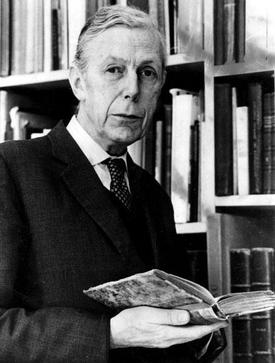
Anthony Frederick Blunt, styled Sir Anthony Blunt from 1956 to November 1979, was a leading British art historian and Soviet spy.

Princess Augusta of Hesse-Kassel was the wife of Prince Adolphus, Duke of Cambridge, the tenth-born child, and seventh son, of George III of the United Kingdom and Charlotte of Mecklenburg-Strelitz. The longest-lived daughter-in-law of George III, she was the maternal grandmother of Mary of Teck, wife of George V.

Kronberg im Taunus is a town in the Hochtaunuskreis district, Hesse, Germany and part of the Frankfurt Rhein-Main urban area. Before 1866, it was in the Duchy of Nassau; in that year the whole Duchy was absorbed into Prussia. Kronberg lies at the foot of the Taunus, flanked in the north and southwest by forests. A mineral water spring also rises in the town.

Sophia of Prussia was Queen of Greece from 1913 to 1917 and from 1920 to 1922 as the wife of King Constantine I.

Princess Viktoria of Prussia was the second daughter of Frederick III, German Emperor and his wife Victoria, Princess Royal, eldest daughter of Queen Victoria. Born a member of the Prussian royal house of Hohenzollern, she became Princess Adolf of Schaumburg-Lippe following her first marriage in 1890.

Margaret of Prussia was the youngest child of Frederick III, German Emperor, and Victoria, Princess Royal. She was also the younger sister of Emperor Wilhelm II and the granddaughter of Queen Victoria. She married Prince Frederick Charles of Hesse, the elected King of Finland, making her the would-be Queen of Finland had he not decided to renounce the throne on 14 December 1918. In 1926, they assumed the titles of Landgrave and Landgravine of Hesse. The couple had six sons and lost three of them in wartime, two during the First and one during the Second World War.

Princess Elizabeth, called Eliza, was the seventh child and third daughter of King George III and Queen Charlotte. After marrying the Landgrave of Hesse-Homburg, Frederick VI, she took permanent residence in Germany as landgravine.
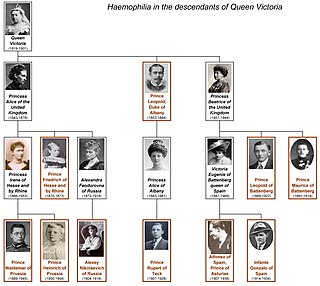
Haemophilia figured prominently in the history of European royalty in the 19th and 20th centuries. Queen Victoria and her husband, Prince Albert, of the United Kingdom, through two of their five daughters – Princess Alice and Princess Beatrice – passed the mutation to various royal houses across the continent, including the royal families of Spain, Germany, and Russia. Victoria's youngest son, Prince Leopold, Duke of Albany, also had the disease, though none of her three elder sons did. Tests on the remains of the Romanov imperial family show that the specific form of haemophilia passed down by Queen Victoria was probably the relatively rare haemophilia B. The presence of haemophilia B within the European royal families was well-known, with the condition once popularly known as "the royal disease".
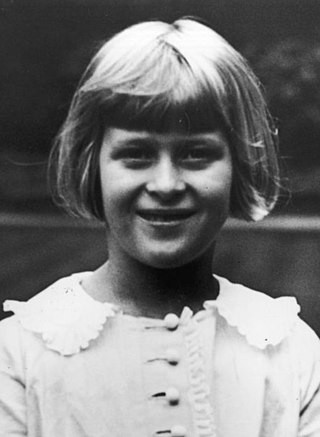
Princess Sophie of Greece and Denmark was by birth a Greek and Danish princess, as well as Princess of Hesse-Kassel and Princess of Hanover through her successive marriages to Prince Christoph of Hesse and Prince George William of Hanover. An elder sister of Prince Philip, Duke of Edinburgh, she was, for a time, linked to the Nazi regime.

Prince Christoph of Hesse was a nephew of Kaiser Wilhelm II. He was an SS-Oberführer in the Allgemeine SS and an officer in the Luftwaffe Reserve, killed on active duty in a plane crash during World War II. His brother-in-law, Prince Philip of Greece and Denmark, fought on the British side and married the future Queen Elizabeth II after the war.
Donatus, Prince and Landgrave of Hesse is a German businessman and the head of the House of Brabant and the House of Hesse.

The Royal Family Order of George IV is an honour that was bestowed as a mark of personal esteem on female members of the British royal family by King George IV. It was the first Royal Family Order issued in the United Kingdom. Prior to George IV's accession in 1820, both ladies and gentlemen of the Court, as well as female members of the royal family, had worn the Sovereign's portrait set in a jewelled frame. George IV formalised the order.
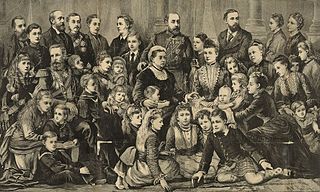
Queen Victoria, the British monarch from 1837 to 1901, and Prince Albert had 9 children, 42 grandchildren, and 87 great-grandchildren. Victoria was called the "grandmother of Europe".

Frederick Augustus of Anhalt-Dessau, was a German prince of the House of Ascania from the Anhalt-Dessau branch.

Anna of Prussia was a Prussian princess as the granddaughter of King Frederick William III of Prussia. She was the second wife of Prince Frederick William of Hesse-Kassel.
Princess Christina Margarethe of Hesse was a German princess. A first cousin of King Charles III of the United Kingdom, she was the wife, from 1956 to 1962, of Prince Andrew of Yugoslavia, a son of Alexander I of Yugoslavia.
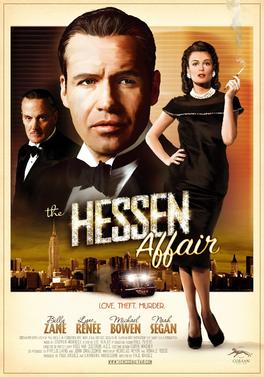
The Hessen Affair is a 2009 Belgian film noir-style thriller movie, partly filmed in Manitoba, Canada, scripted by Nicholas Meyer and directed by Paul Breuls and starring Billy Zane, Lyne Renee, Noah Segan, and Michael Bowen. The movie was released on DVD as The Hessen Conspiracy.
Sir Owen Frederick Morshead, was a British Army officer and librarian, who served as Royal Librarian from 1926 to 1958.




















